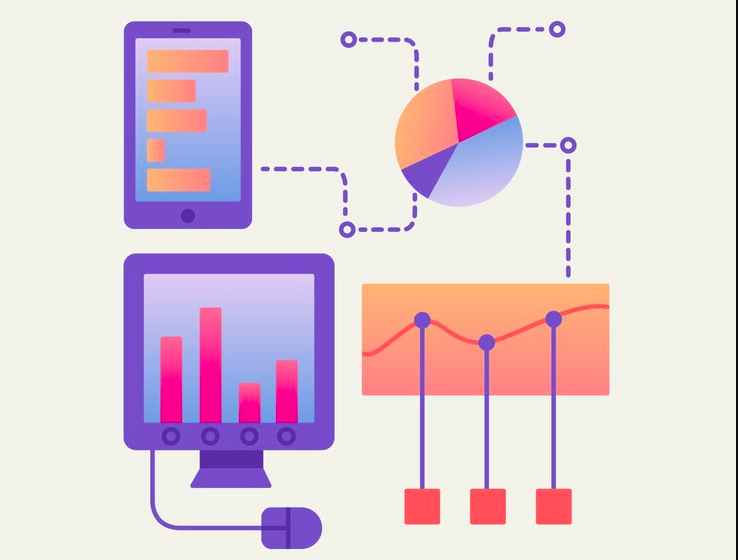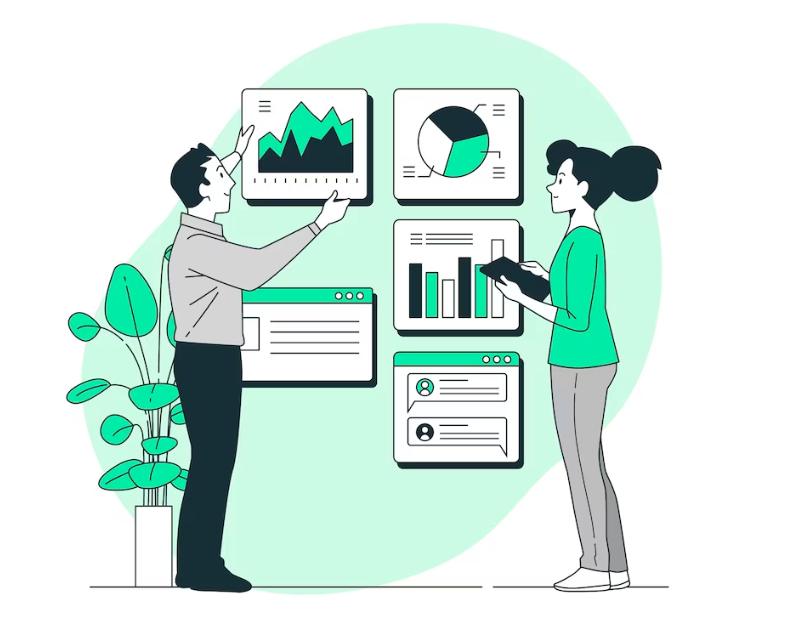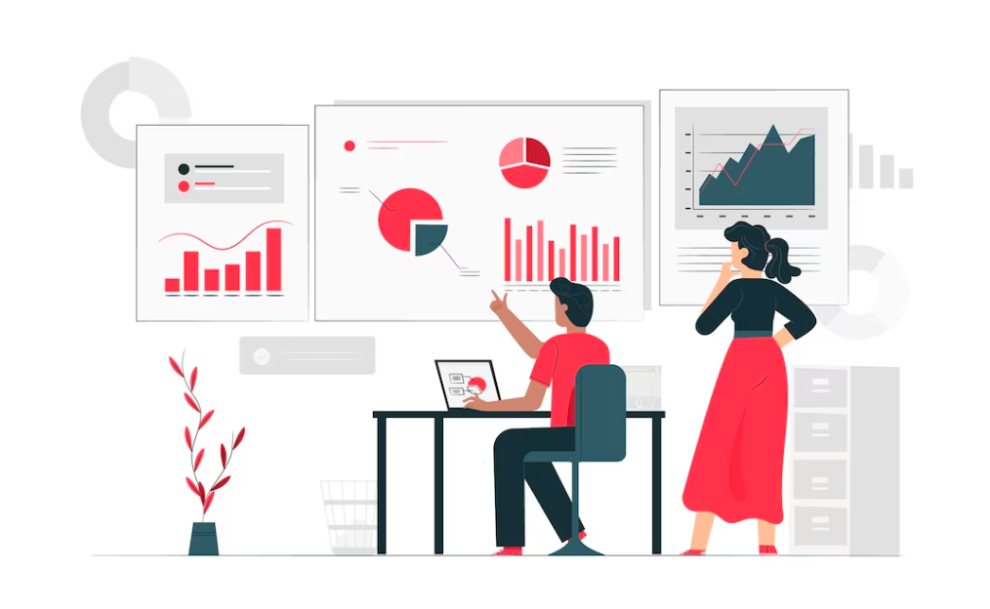In the vast landscape of data, where information flows like a digital river, the ability to transform raw numbers into meaningful insights is a skill that can make or break decision-making processes. Data visualization, often hailed as the bridge between data and understanding, has emerged as a powerful tool in the hands of analysts, scientists, and storytellers alike. In this blog post, we’ll embark on a journey to explore the fascinating world of data visualization, understanding its significance, techniques, and the impact it can have on the way we perceive information.
The Power of Visual Communication:

Humans are visual beings, wired to process visual information more efficiently than raw data. Data visualization harnesses this inherent ability to process complex information effortlessly. By translating data into visual elements such as charts, graphs, and maps, it becomes easier for individuals to grasp trends, patterns, and correlations that may be elusive in raw numerical form. As the saying goes, “A picture is worth a thousand words,” and in the realm of data, a visual representation can convey insights that go beyond what words alone can express.
- Enhanced Understanding:
- Data visualization simplifies complex datasets, making it easier for individuals to understand intricate patterns and relationships within the data.
- Visual representations, such as charts and graphs, provide a quick and intuitive overview, allowing for more informed decision-making.
- Efficient Communication:
- Visualizations transcend language barriers, enabling universal understanding of data trends and insights.
- In presentations or reports, well-crafted visualizations can convey a wealth of information efficiently, saving time and reducing the risk of misinterpretation.
Types of Data Visualizations:

Data comes in various forms, and so do the visualizations that represent it. From simple bar charts to intricate heatmaps, the choice of visualization depends on the nature of the data and the story it seeks to tell. This section will delve into some common types of data visualizations, exploring when and how to use them effectively. Whether it’s pie charts for proportions, line graphs for trends, or scatter plots for correlations, each visualization method has its unique strengths.
- Bar Charts for Comparisons:
- Bar charts excel in comparing quantities across different categories, making them ideal for showcasing variations or trends.
- Whether it’s sales figures by region or student performance across subjects, bar charts offer a straightforward and visually compelling representation.
- Heatmaps for Intensity Mapping:
- Heatmaps visually represent data values in a matrix, using color intensity to highlight patterns.
- From analyzing website user engagement to identifying hotspots in geographical data, heatmaps are powerful tools for visualizing intensity and concentration.
The Art of Storytelling with Data:

Data visualization is not just about presenting information; it’s about telling a compelling story. Just as a skilled storyteller weaves together words to captivate an audience, an adept data visualizer crafts visuals that guide viewers through the narrative within the data. This section will discuss the art of storytelling with data, emphasizing the importance of clarity, coherence, and context. We’ll explore real-world examples where data visualization has been used to shed light on complex issues, influencing decision-makers and sparking meaningful conversations.
- Clarity in Design:
- An effective data visualization tells a clear story by maintaining simplicity in design, ensuring that the audience can grasp the main message without confusion.
- Thoughtful use of colors, labels, and layout contributes to the overall clarity of the visualization.
- Contextual Narratives:
- To tell a compelling story, data visualizers must provide context to the audience, explaining the significance of the patterns and trends.
- Incorporating contextual information ensures that viewers can connect the dots between data points and understand the broader implications.
Tools of the Trade:

In the digital age, a plethora of tools and platforms have emerged to facilitate the creation of stunning data visualizations. From user-friendly tools like Tableau and Google Data Studio to programming languages like Python with libraries such as Matplotlib and Seaborn, there is a tool for every skill level and requirement. This section will provide an overview of some popular data visualization tools, helping readers find the right fit for their needs.
- Tableau for Interactive Visualizations:
- Tableau is renowned for its ability to create interactive and dynamic visualizations, allowing users to explore data on their terms.
- Its user-friendly interface makes it accessible to both beginners and experienced data professionals.
- Python’s Matplotlib for Customization:
- Matplotlib, a popular Python library, offers a high level of customization for creating publication-quality visualizations.
- With Matplotlib, users have fine-grained control over the appearance of their plots, making it a preferred choice for those who prioritize customization and flexibility.
As we conclude our exploration of data visualization, it’s clear that this art and science play a pivotal role in transforming raw data into actionable insights. Whether you’re an analyst seeking to communicate findings, a business leader making informed decisions, or simply a curious individual exploring the world of data, the ability to harness the power of visualization is a valuable skill. As we continue to navigate the sea of information, let data visualization be our guiding light, illuminating the hidden patterns and stories that shape our understanding of the world.




